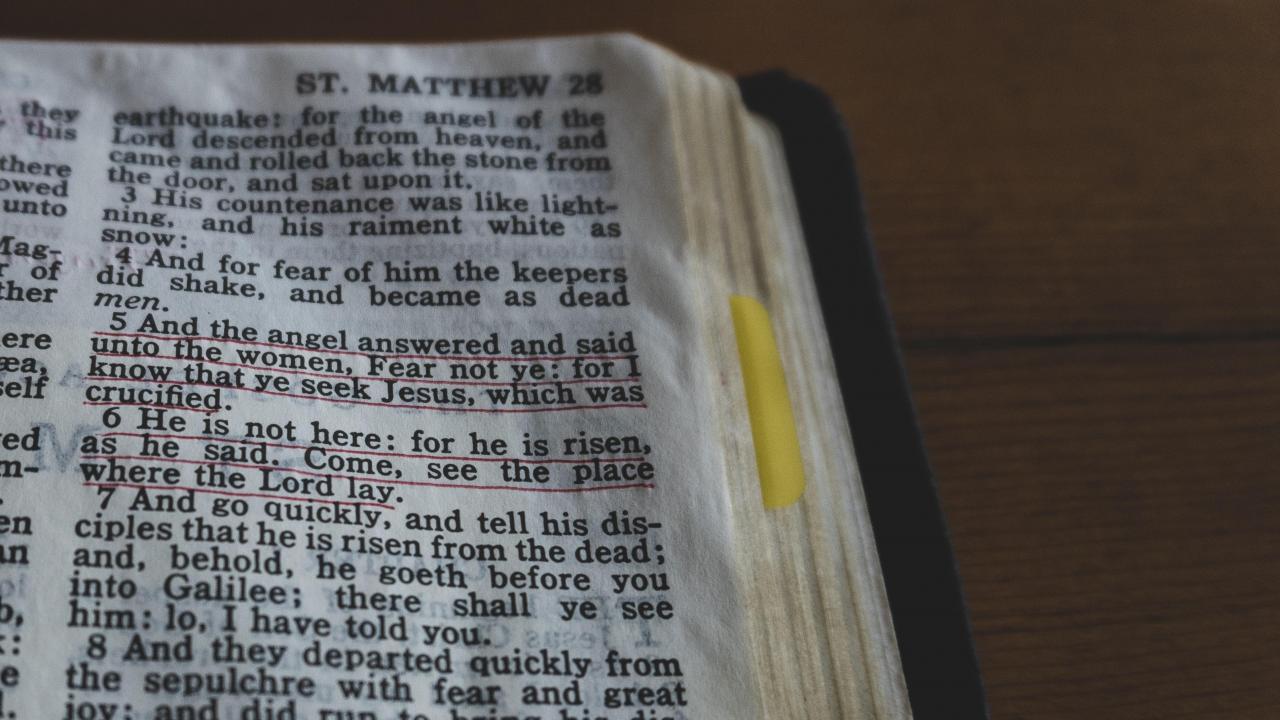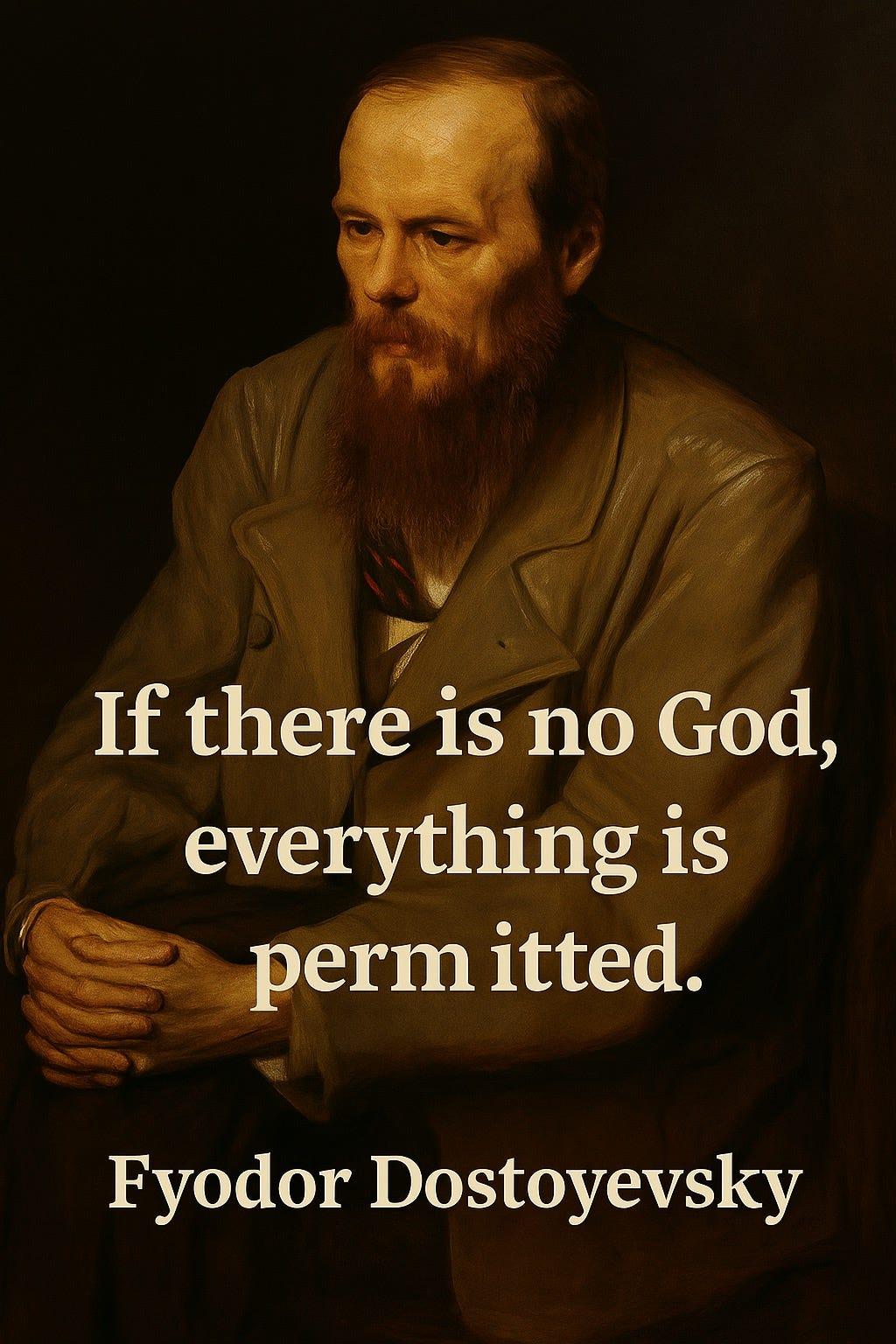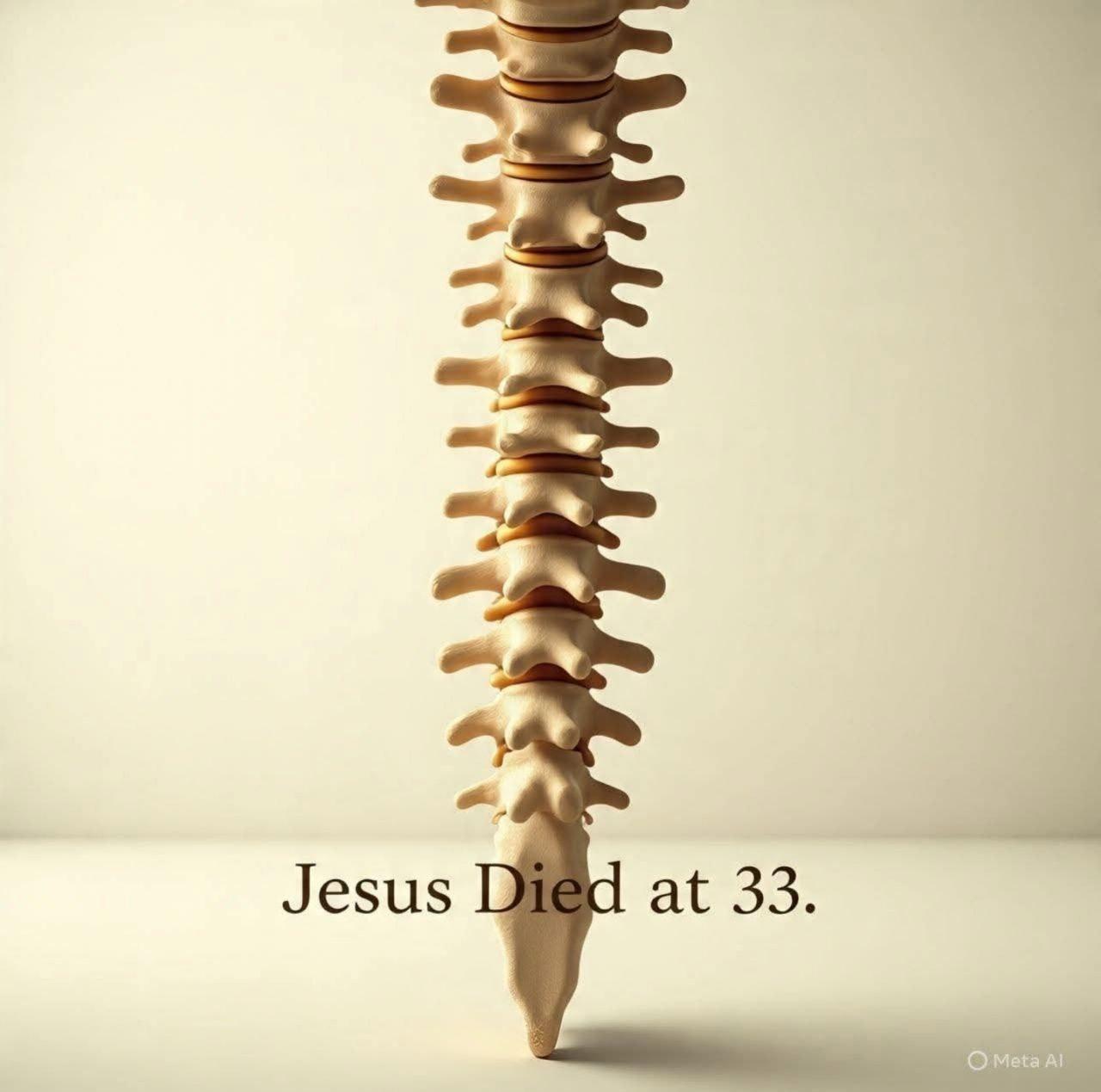The Deity of Christ in the Gospel of Matthew - Part 2

Matthew's theme - The divine presence of Jesus
This is a guest post by “KingsServant”, see Part 1 here.
Having covered Matthew’s introduction to his gospel in his nativity account, we will now consider the way Matthew “bookends” the gospel by beginning his work with the promise of God dwelling with his people (fulfilled in the incarnation) and ending it in the same way with Jesus’ comforting promise never to leave his followers.
This theme of Matthew begins with his quotation of Isaiah 7:14, which we have already analysed in the previous article with regard to how it reveals Matthew’s teaching that Jesus is God.
As noted before, in Matthew 1:23, Matthew draws special attention to the meaning of the name Immanuel and sees the birth of Jesus as necessary for its ultimate fulfilment.
Matthew 1:23: “Behold, the virgin will conceive and give birth to a Son, and they shall name Him Immanuel,” which translated means, “God with us.”
Matthew also ends his gospel, following the resurrection, with this promise of Jesus;
(Matthew 28:20): “…teaching them to follow all that I commanded you; and behold, I am with you always, to the end of the age.”
Matthew emphasises the point at both beginning and end that Jesus is “with us”. First, in 1:23 he combines this with calling Jesus God. Second, he records Jesus as claiming his perpetual presence with his people wherever they are.
To understand the importance of Matthew’s choice of this theme an overview of this subject in the Old Testament is needed.
In the book of Genesis man is created (and woman from his side), then they are placed in the garden of Eden where they enjoy the presence of God who walked with them, until they act disobediently to him after which he came to them and it is written;
(Genesis 3:8): “Now they heard the sound of the Lord God walking in the garden in the cool of the day, and the man and his wife hid themselves from the presence of the Lord God among the trees of the garden.”
The result is a curse on the ground and the tempter who led them to sin.
Along with this curse God pronounced judgement on them, man was driven out of the garden, separated from the presence of God and the tree of life that could enable them to live forever as sinners.
(Genesis 3:24): “So He drove the man out; and at the east of the Garden of Eden He stationed the cherubim and the flaming sword which turned every direction to guard the way to the tree of life.”
Since then God has been working towards reversing this event, undoing the effects of sin, chief among them the broken fellowship mankind has with God.
God chose Abraham as the one through whom his blessing will reach all nations (Genesis 12:3) and after calling his descendants out of Egypt orders the construction of the tabernacle saying (Exodus 25:8): “Have them construct a sanctuary for Me, so that I may dwell among them.”
The tabernacle construction included details for how priests could enter the presence of God as representatives of Israel. Part way through this, Jehovah again comments on his purpose:
(Exodus 29:42–45): “…where I will meet with you, to speak to you there. 43 I will meet there with the sons of Israel, and it shall be consecrated by My glory. 44 I will consecrate the tent of meeting and the altar; I will also consecrate Aaron and his sons to serve as priests to Me. 45 And I will dwell among the sons of Israel and will be their God. 46 And they shall know that I am the Lord their God who brought them out of the land of Egypt, so that I might dwell among them; I am the Lord their God.”
King David wanted to build a more permanent building for God to dwell in, but this request was denied to him although permitted to his son Solomon. Notice the words of Jehovah through the prophet Nathan to David:
(2 Samuel 7:5–7): “Go and say to My servant David, ‘This is what the Lord says: “Should you build Me a house for My dwelling? 6 For I have not dwelt in a house since the day I brought up the sons of Israel from Egypt, even to this day; rather, I have been moving about in a tent, that is, in a dwelling place. 7 Wherever I have gone with all the sons of Israel, did I speak a word with one of the tribes of Israel, whom I commanded to shepherd My people Israel, saying, ‘Why have you not built Me a house of cedar?’””
God is explicit about being in that tent and moving with it, he was content with that and did not ask for anything different. Eventually however in the time of Solomon, the temple was built as a fixed location for God to dwell, replacing the tabernacle and serving the same purpose.
In his prayer of dedication, Solomon said,
(1 Kings 8:27–30): “But will God indeed dwell on the earth? Behold, heaven and the highest heaven cannot contain You, how much less this house which I have built! 28 Nevertheless, turn Your attention to the prayer of Your servant and to his plea, Lord, my God, to listen to the cry and to the prayer which Your servant prays before You today, 29 so that Your eyes may be open toward this house night and day, toward the place of which You have said, ‘My name shall be there,’ to listen to the prayer which Your servant will pray toward this place. 30 And listen to the plea of Your servant and of Your people Israel, when they pray toward this place; hear in heaven Your dwelling place; hear and forgive!”
There are three correct answers to the question “where is God?”: in heaven, in the temple and that he is omnipresent, throughout space and time. God’s presence in a specific location on earth in no way negates his presence in heaven or his omnipresence. Notice how God is equated with his name, a point we will return to in a later article (Lord willing).
This temple was eventually destroyed because of the persistent sin of the people and a new “house of the Lord” (Ezra 1:3,5 etc) was constructed when people returned from captivity in Babylon.
Matthew sees the birth of Jesus Christ as a new depth in this continuing saga of God coming to dwell with his people. He points out that he is the fulfilment of the prophecy of Immanuel — “God with us” at the very beginning of his Gospel (John’s Gospel presents the same theme with John 1:14 “And the Word became flesh, and dwelt (literally tabernacled) among us; and we saw His glory, glory as of the only Son from the Father, full of grace and truth.”). He is a more direct closer manifestation of God than had been experienced by mankind throughout history. God, not appearing in angelic form or some visual representation in a vision or dream, but actually becoming a man through a real human mother in order to be the Saviour of his people. (Matthew 1:21–23)
Matthew tells us his account of the life, death, and resurrection of Jesus, and how he accomplished his task of securing salvation for his people as predicted (Matthew 1:21). The gospel was written after his ascension. Matthew has one final question to ask. Having come closer to us than ever before and fulfilling his purpose, especially after predicting the destruction of the second temple, has Jesus left us? This is answered with a resounding “no!”; Jesus promised before ascending to heaven that he would always be with his people, even to the end of the age. (Matthew 28:20); “…behold, I am with you always, to the end of the age.”
Just as Solomon realised, the presence of God is not limited to a particular place where he is known to have placed his name. Jesus promises that his special presence will follow his disciples wherever they are until his return. His person is not limited to the location of his physical body — his temple. He has a nature which is transcendent, omnipresent, and unrestrained by space. In the book of Jeremiah, Jehovah describes himself as having this attribute (Jeremiah 23:23–24): ““Am I a God who is near,” declares the Lord, “And not a God far off? 24 Can a person hide himself in hiding places So that I do not see him?” declares the Lord. “Do I not fill the heavens and the earth?” declares the Lord” (see also Psalm 139).
In Matthew 28:20 Jesus is claiming an attribute of God alone and thereby claiming to be God. He uses the emphatic pronoun “I”, it is he himself who will be with them, not merely his teachings, prayers, memory or example.
Another statement of Jesus about his omnipresence is recorded earlier in Matthew (18:20): “…. where two or three have gathered together in My name, I am there in their midst.” He claims the ability to be in any location where people are gathered in his name, even simultaneously.
This recalls a passage in Exodus (Exodus 20:24): “…in every place where I cause My name to be remembered, I will come to you and bless you”
You have the direct parallel of location, name and presence, a gathering is also implicit in this text. What God promised and did in the Old Testament requiring his unique attributes, Jesus now promises and does in the New.
There is also a striking resemblance between Matthew 18:20 and a passage from the Talmud[1]
“Rabbi Chananya ben Teradyon says: But two who are sitting together and there are words of Torah [spoken] between them, the Divine Presence [Shekhinah] rests with them, as it is said (Mal 3:16): “Then those who feared the Lord spoke one with another, and the Lord hearkened and heard, and a book of remembrance was written before Him, for those who feared the Lord and for those who thought upon His Name.””
This is after the new testament because the Rabbi lived in the 2nd century AD, although the Rabbis claim that many of their traditions are very ancient, even in some cases from Moses himself. How is the similarity between these 2 texts best explained? The Rabbi is too late to be the source of the saying of Jesus, but also it would be most peculiar for a non-messianic Rabbi to be using Matthew as his source, taking a saying of Jesus from it and equating or replacing Jesus with the Shekhinah, especially in the presence of other parallels that have less correlation with Matthew 18:20. As a result most scholars agree that this is based on an earlier Jewish tradition, one from which these later rabbinic sayings were derived. These later rabbinic traditions and the similarity to what Jesus says in Matthew 18:20 suggest that in this saying Jesus is not only claiming omnipresence — a unique attribute of Yahweh but also identifying his presence as the divine presence of God.
I will conclude with a quote from Craig Keener[2] giving his summary of this theme in Matthew;
“Matthew does not think of “God with us” merely at Jesus’ birth, or during his earthly ministry, or in some abstract way. He revisits this issue toward the middle and end of his Gospel. In 18:20, Jesus announces, “Where two or three have come together in my name, I am in their midst.” In 28:18–20, Matthew’s Gospel closes with Jesus’ Great Commission. The final words indicate that as we continue carrying out this commission, Jesus will be with us: “I am always with you,” he declares, “even until the end of the age.” Jewish people understood that only God could be with them at all times. There could be no misunderstanding about who Jesus really is.”
Sources:
[1] M. Avot 3:2. Pirkei Avot 3:2 with Connections (sefaria.org)
[2] Jesus as Immanuel: God with us — Bible Background (craigkeener.com)
Leave a comment Like Back to Top Seen 1.2K times Liked 0 times
Enjoying this content?
Support my work by becoming a patron on Patreon!
By joining, you help fund the time, research, and effort that goes into creating this content — and you’ll also get access to exclusive perks and updates.
Even a small amount per month makes a real difference. Thank you for your support!
Subscribe to Updates
If you enjoyed this, why not subscribe to free email updates and join over 864 subscribers today!
My new book is out now! Order today wherever you get books
Recent Posts
Luke J. Wilson | 19th August 2025 | Fact-Checking
A poetic post has been circulating widely on Facebook, suggesting that our anatomy mirrors various aspects of Scripture. On the surface it sounds inspiring, but when we take time to weigh its claims, two main problems emerge. The viral post circulating on Facebook [Source] First, some of its imagery unintentionally undermines the pre-existence of Christ, as if Jesus only “held the earth together” for the 33 years of His earthly life. Second, it risks reducing the resurrection to something like biological regeneration, as if Jesus simply restarted after three days, instead of being raised in the miraculous power of God. Alongside these theological dangers, many of the scientific claims are overstated or symbolic rather than factual. Let’s go through them one by one. 1. “Jesus died at 33. The human spine has 33 vertebrae. The same structure that holds us up is the same number of years He held this Earth.” The human spine does generally have 33 vertebrae, but that number includes fused bones (the sacrum and coccyx), and not everyone has the same count. Some people have 32 or 34. More importantly, the Bible never says Jesus was exactly 33 when He died — Luke tells us He began His ministry at “about thirty” (Luke 3:23), and we know His public ministry lasted a few years, but His precise age at death is a tradition, not a biblical statement. See my other recent article examining the age of Jesus here. Theologically, the phrase “the same number of years He held this Earth” is problematic. Jesus did not hold the world together only for 33 years. The eternal Word was with God in the beginning (John 1:1–3), and “in Him all things hold together” (Colossians 1:17). Hebrews says He “sustains all things by His powerful word” (Hebrews 1:3). He has always upheld creation, before His incarnation, during His earthly ministry, and after His resurrection. To imply otherwise is to risk undermining the pre-existence of Christ. 2. “We have 12 ribs on each side. 12 disciples. 12 tribes of Israel. God built His design into our bones.” Most people do have 12 pairs of ribs, though some are born with an extra rib, or fewer. The number 12 is certainly biblical: the 12 tribes of Israel (Genesis 49), the 12 apostles (Matthew 10:1–4), and the 12 gates and foundations of the New Jerusalem (Revelation 21). But there’s no biblical connection between rib count and these symbolic twelves. This is a case of poetic association, not design woven into our bones. The only real mention of ribs in Scripture is when Eve is created from one of Adam’s ribs in Genesis 2:21–22, which has often led to the teaching in some churches that men have one less rib than women (contradicting this new claim)! 3. “The vagus nerve runs from your brain to your heart and gut. It calms storms inside the body. It looks just like a cross.” The vagus nerve is real and remarkable. It regulates heart rate, digestion, and helps calm stress, and doctors are even using vagus nerve stimulation as therapy for epilepsy, depression, and inflammation showing it really does “calm storms” in the body. But it does not look like a cross anatomically. The language about “calming storms” may echo the way Jesus calmed the storm on the Sea of Galilee (Mark 4:39), but here again the poetic flourish stretches science (and Scripture) beyond what’s accurate. 4. “Jesus rose on the third day. Science tells us that when you fast for 3 days, your body starts regenerating. Old cells die. New ones are born. Healing begins. Your body literally resurrects itself.” There’s a serious theological problem here. To equate Jesus’ resurrection with a biological “regeneration” after fasting is to misrepresent what actually happened. Fasting can indeed trigger cell renewal and immune repair, but it cannot bring the dead back to life. It’s still a natural process that happens...
Luke J. Wilson | 08th July 2025 | Islam
“We all worship the same God”. Table of Contents 1) Where YHWH and Allah Appear Similar 2) Where Allah’s Character Contradicts YHWH’s Goodness 3) Where Their Revelations Directly Contradict Each Other 4) YHWH’s Love for the Nations vs. Allah’s Commands to Subjugate 5) Can God Be Seen? What the Bible and Qur’an Say 6) Salvation by Grace vs. Salvation by Works Conclusion: Same God? Or Different Revelations? You’ve heard it from politicians, celebrities, and even some pastors. It’s become something of a modern mantra, trying to shoehorn acceptance of other beliefs and blend all religions into one, especially the Abrahamic ones. But what if the Bible and Qur’an tell different stories? Let’s see what their own words reveal so you can judge for yourself. This Tweet recently caused a stir on social media 1) Where YHWH and Allah Appear Similar Many point out that Jews, Christians, and Muslims share a belief in one eternal Creator God. That’s true — up to a point. Both the Bible and Qur’an describe God as powerful, all-knowing, merciful, and more. Here’s a list comparing some of the common shared attributes between YHWH and Allah, with direct citations from both Scriptures: 26 Shared Attributes of YHWH and Allah According to the Bible (NRSV) and the Qur’an Eternal YHWH: “From everlasting to everlasting you are God.” — Psalm 90:2 Allah: “He is the First and the Last…” — Surah 57:3 Creator YHWH: “In the beginning God created the heavens and the earth.” — Genesis 1:1 Allah: “The Originator of the heavens and the earth…” — Surah 2:117 Omnipotent (All-Powerful) YHWH: “Nothing is too hard for you.” — Jeremiah 32:17 Allah: “Allah is over all things competent.” — Surah 2:20 Omniscient (All-Knowing) YHWH: “Even before a word is on my tongue, O LORD, you know it.” — Psalm 139:4 Allah: “He knows what is on the land and in the sea…” — Surah 6:59 Omnipresent (Present Everywhere) YHWH: “Where can I go from your Spirit?” — Psalm 139:7–10 Allah: “He is with you wherever you are.” — Surah 57:4 Holy YHWH: “Holy, holy, holy is the LORD of hosts.” — Isaiah 6:3 Allah: “The Holy One (Al-Quddus).” — Surah 59:23 Just YHWH: “A God of faithfulness and without injustice.” — Deuteronomy 32:4 Allah: “Is not Allah the most just of judges?” — Surah 95:8 Merciful YHWH: “The LORD, merciful and gracious…” — Exodus 34:6 Allah: “The Most Gracious, the Most Merciful.” — Surah 1:1 Compassionate YHWH: “As a father has compassion on his children…” — Psalm 103:13 Allah: “He is the Forgiving, the Affectionate.” — Surah 85:14 Faithful YHWH: “Great is your faithfulness.” — Lamentations 3:22–23 Allah: “Indeed, the promise of Allah is truth.” — Surah 30:60 Unchanging YHWH: “For I the LORD do not change.” — Malachi 3:6 Allah: “None can change His words.” — Surah 6:115 Sovereign YHWH: “The LORD has established his throne in the heavens…” — Psalm 103:19 Allah: “Blessed is He in whose hand is dominion…” — Surah 67:1 Loving YHWH: “God is love.” — 1 John 4:8 Allah: “Indeed, my Lord is Merciful and Affectionate (Al-Wadud).” — Surah 11:90 Forgiving YHWH: “I will not remember your sins.” — Isaiah 43:25 Allah: “Allah forgives all sins…” — Surah 39:53 Wrathful toward evil YHWH: “The LORD is a jealous and avenging God…” — Nahum 1:2 Allah: “For them is a severe punishment.” — Surah 3:4 One/Unique YHWH: “The LORD is one.” — Deuteronomy 6:4 Allah: “Say: He is Allah, One.” — Surah 112:1 Jealous of worship YHWH: “I the LORD your God am a jealous God.” �...
Luke J. Wilson | 05th June 2025 | Blogging
As we commemorated the 500th anniversary of the Protestant Reformation this year, the familiar image of Martin Luther striding up to the church door in Wittenberg — hammer in hand and fire in his eyes — has once again taken centre stage. It’s a compelling picture, etched into the imagination of many. But as is often the case with historical legends, closer scrutiny tells a far more nuanced and thought-provoking story. The Myth of the Door: Was the Hammer Ever Raised? Cambridge Reformation scholar Richard Rex is one among several historians who have challenged the romanticised narrative. “Strangely,” he observes, “there’s almost no solid evidence that Luther actually went and nailed them to the church door that day, and ample reasons to doubt that he did.” Indeed, the first image of Luther hammering up his 95 Theses doesn’t appear until 1697 — over 180 years after the fact. Eric Metaxas, in his recent biography of Luther, echoes Rex’s scepticism. The earliest confirmed action we can confidently attribute to Luther on 31 October 1517 is not an act of public defiance, but the posting of two private letters to bishops. The famous hammer-blow may never have sounded at all. Conflicting Accounts Philip Melanchthon, Luther’s successor and first biographer, adds another layer of complexity. He claimed Luther “publicly affixed” the Theses to the door of All Saints’ Church, but Melanchthon wasn’t even in Wittenberg at the time. Moreover, Luther himself never mentioned posting the Theses publicly, even when recalling the events years later. Instead, he consistently spoke of writing to the bishops, hoping the matter could be addressed internally. At the time, it was common practice for a university disputation to be announced by posting theses on church doors using printed placards. But no Wittenberg-printed copies of the 95 Theses survive. And while university statutes did require notices to be posted on all church doors in the city, Melanchthon refers only to the Castle Church. It’s plausible Luther may have posted the Theses later, perhaps in mid-November — but even that remains uncertain. What we do know is that the Theses were quickly circulated among Wittenberg’s academic elite and, from there, spread throughout the Holy Roman Empire at a remarkable pace. The Real Spark: Ink, Not Iron If there was a true catalyst for the Reformation, it wasn’t a hammer but a printing press. Luther’s Latin theses were swiftly reproduced as pamphlets in Basel, Leipzig, and Nuremberg. Hundreds of copies were printed before the year’s end, and a German translation soon followed, though it may never have been formally published. Within two weeks, Luther’s arguments were being discussed across Germany. The machinery of mass communication — still in its relative infancy — played a pivotal role in what became a theological, political, and social upheaval. The Letters of a Conscientious Pastor Far from the bold revolutionary of popular imagination, Luther appears in 1517 as a pastor deeply troubled by the abuse of indulgences, writing with respectful concern to those in authority. In his letter to Archbishop Albrecht of Mainz, he humbly addresses the archbishop as “Most Illustrious Prince,” and refers to himself as “the dregs of humanity.” “I, the dregs of humanity, have so much boldness that I have dared to think of a letter to the height of your Sublimity,” he writes — hardly the voice of a man trying to pick a fight. From Whisper to Roar Luther’s initial appeal through formal channels was, predictably, ignored. He was advised not to make trouble. But as opposition mounted and corruption remained unchecked, the once quiet reformer grew louder. His theological convictions deepened, and his public persona evolved. The lion did eventually roar — but not on October 31. A Catholic Reformer, Not a Protestant Founder It’s vital to remem...
Luke J. Wilson | 20th May 2025 | Islam
You are not alone. Around the world, many Muslims — people who already believe in one God, pray, and seek to live righteously — are drawn to know more about Jesus (ʿĪsā in Arabic). Some have heard He is more than a prophet. Some have sensed His presence in a dream or vision. And some simply long to know God more deeply, personally, and truly. So what does it mean to become a Christian? And how can you take that step? This guide is for you. 1. What Christians Believe About God and Jesus ➤ One God, Eternal and Good Christians believe in one God — the same Creator known to Abraham, Moses, and the prophets. But we also believe God is more personal and relational than many realise. In His love, He has revealed Himself as Father, Son (Jesus), and Holy Spirit — not three gods, but one God in three persons. ➤ Jesus Is More Than a Prophet Muslims honour Jesus as a great prophet, born of the virgin Mary. Christians also affirm this — but go further. The Bible teaches that Jesus is the Word of God (Kalimat Allāh), who became flesh to live among us. He performed miracles, healed the sick, raised the dead — and lived without sin.Jesus came not just to teach but to save — to bring us back to God by bearing our sins and rising again in victory over death. 2. Why Do We Need Saving? ➤ The Problem: Sin All people — no matter their religion — struggle with sin. We lie, get angry, feel jealous, act selfishly, or fail to love God fully. The Bible says: “All have sinned and fall short of the glory of God.” (Romans 3:23) Sin separates us from God. And no matter how many good deeds we do, we can never make ourselves perfect or holy before Him. ➤ The Solution: Jesus Because God loves us, He did not leave us in our sin. He sent Jesus, His eternal Word, to live as one of us. Jesus died willingly, offering His life as a sacrifice for our sins, then rose again on the third day. “But God proves his love for us in that while we still were sinners Christ died for us.” (Romans 5:8) 3. How Do I Become a Christian? Becoming a Christian is not about joining a Western religion. It’s about entering a relationship with God through faith in Jesus Christ. Here is what the Bible says: ✝️ 1. Believe in Jesus Believe that Jesus is the Son of God, that He died for your sins, and that He rose again. “If you confess with your lips that Jesus is Lord and believe in your heart that God raised him from the dead, you will be saved.” (Romans 10:9) 💔 2. Repent of Your Sins Turn away from sin and ask God to forgive you. This is called repentance. It means being truly sorry and choosing a new way. “Repent therefore, and turn to God so that your sins may be wiped out.” (Acts 3:19) 💧 3. Be Baptised Jesus commands His followers to be baptised in water as a sign of their new life. Baptism represents washing away your old life and rising into a new one with Jesus. “Repent and be baptised every one of you in the name of Jesus Christ so that your sins may be forgiven.” (Acts 2:38) 🕊️ 4. Receive the Holy Spirit When you believe in Jesus, God gives you the Holy Spirit to live within you, guiding you, comforting you, and helping you follow His will. “You received the Spirit of adoption, by whom we cry, ‘Abba! Father!’” (Romans 8:15) 🧎 5. Begin a New Life As a Christian, you are born again — spiritually renewed. You begin to grow in faith, love, and holiness. You read the Bible, pray, fast, and gather with other believers. Your life is no longer your own; you now live for God. 4. What Does a Christian Life Look Like? Jesus said: “If anyone wants to become my followers, let them deny themselves and take up their cross and follow me.” (Matthew 16:24) This means: Loving God with all your heart Loving your neighbour — even your enemies Forgiving others ...









